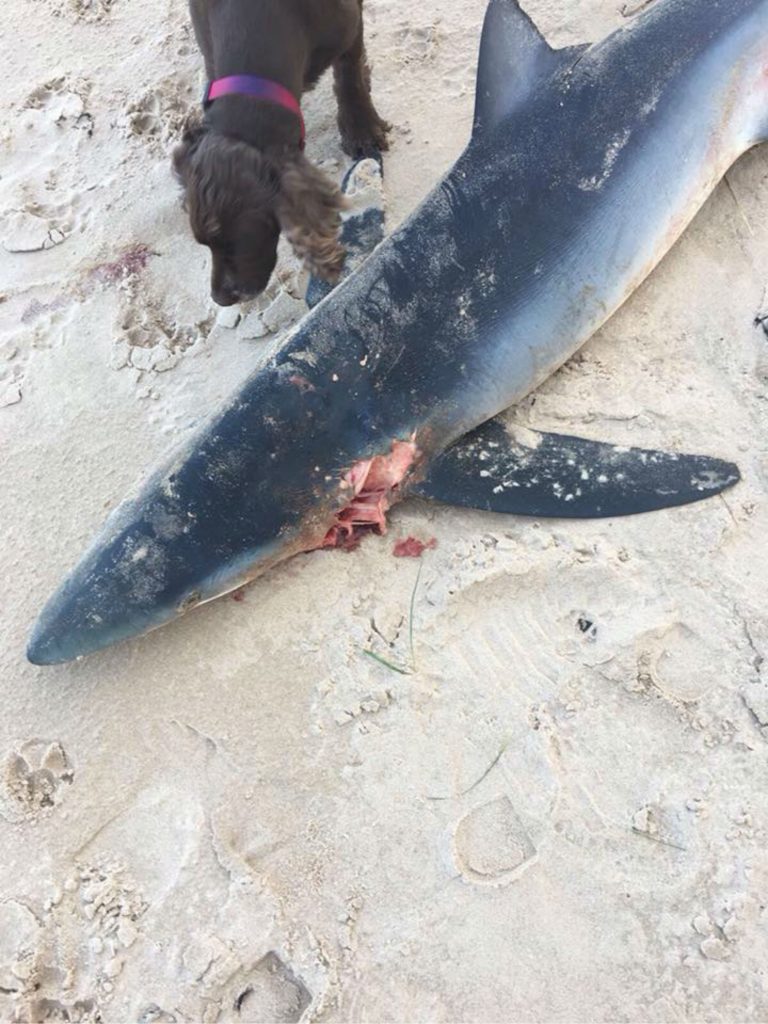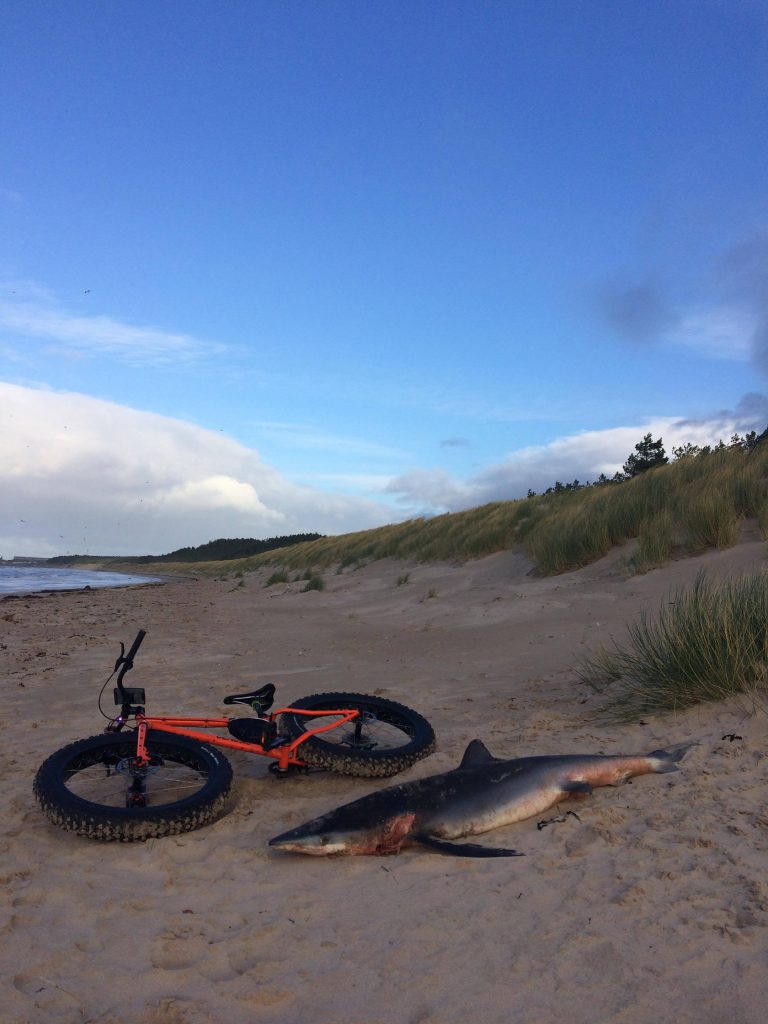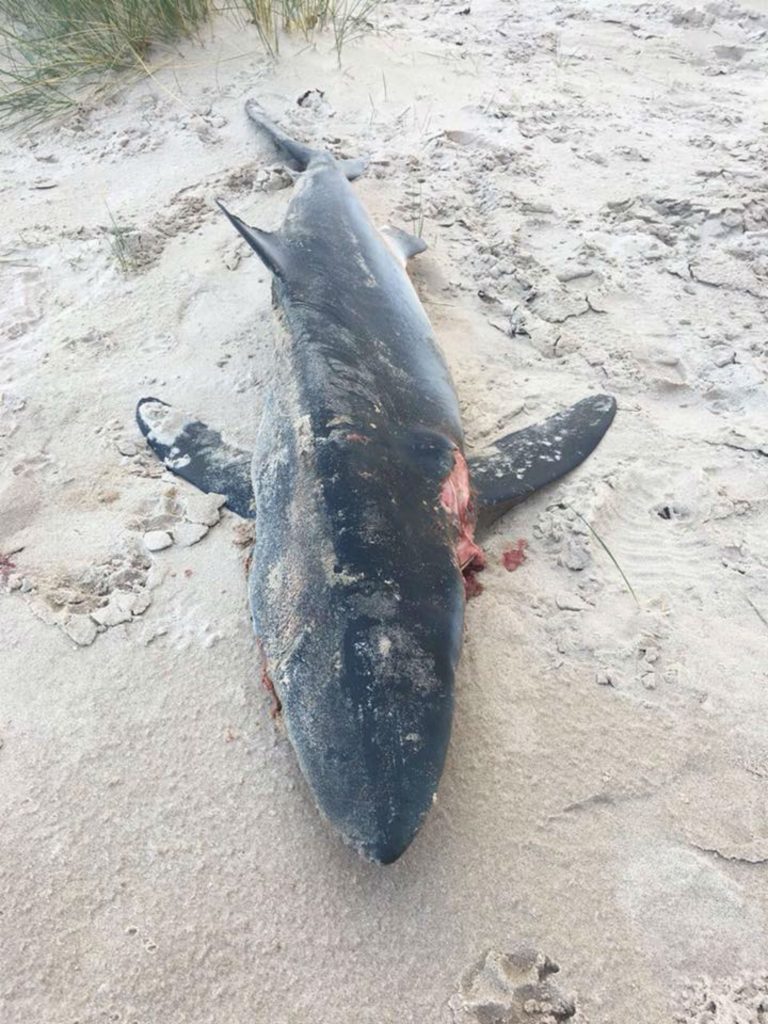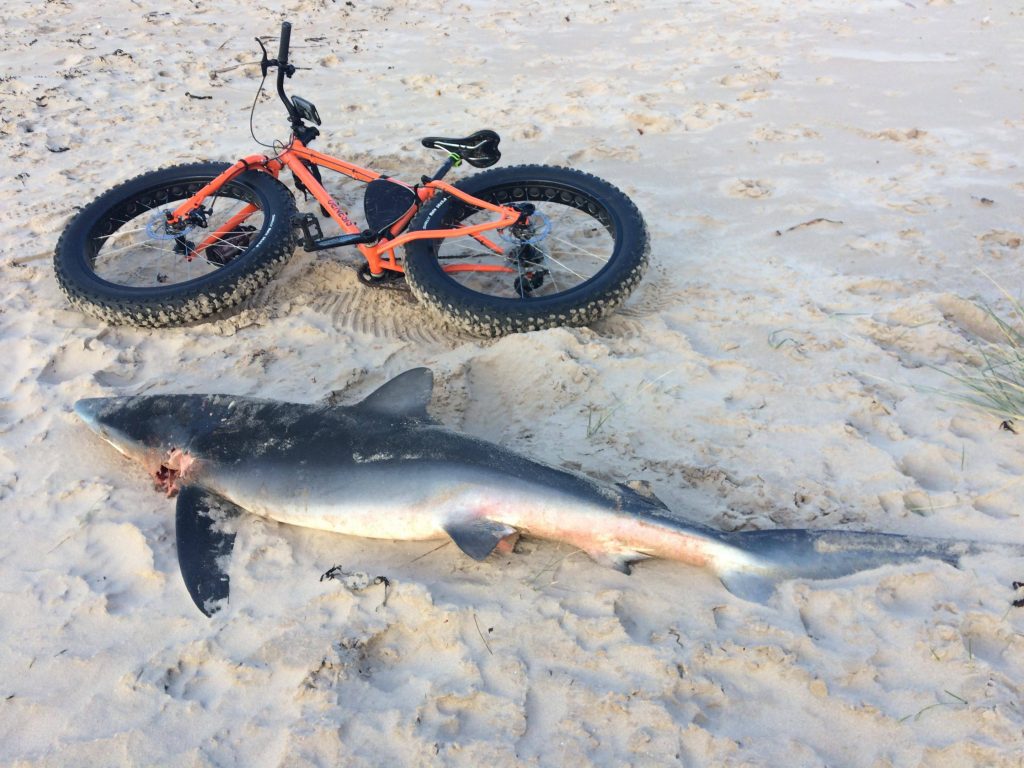MYSTERY surrounds the death of a 6ft blue shark washed up on a Scottish beach with a huge wound on its gills.
The sharks are rare in Scottish waters and the discovery has prompted speculation the predator was killed by dolphins, a speedboat or discarded after being caught by fishermen.
The shark was discovered on the beach at Burghead on the Moray Firth, which is home to a large population of bottlenose dolphins.

The sharks are rare in Scottish waters and the discovery has prompted speculation the predator was killed by dolphins, a speedboat or discarded after being caught by fishermen.
The blue shark, which is found throughout the world’s oceans, rarely bite humans but will attack if they feel threatened.
Dog-walker Donald Campbell took pictures of the shark and posted them online.
The gory images show it with a substantial open wound just behind its eye and along the gills.
It’s unclear whether the injury was inflicted after the shark died or if it contributed to its death.
Donald came across the rare sight whilst walking with his daughter’s spaniel, Millie who is seen in the images.

Donald, from Burghead, wrote: “A sad sight but looks like a dead shark, don’t know species, on Burghead beach at Millieburn this morning on the last high tide.”
Donald suggested: “Wonder if a postmortem would indicate damage from dolphin attack?”
Another wrote on social media: “Very sad, it’s definitely a blue shark. With the damage to the gills it looks like a dolphin attack may be.”
Another social media user commented: “Whacked by a dolphin? Huge damage behind the left gill slits.”
One said: “Looks to have been caught by a boat propeller. Not cool.”
Some else wrote: “Another thing that concerns me is that this shark may have been caught and discarded by a fishing vessel. Then eaten by scavengers.”

Donald revealed today (tues) that the Scottish Marine Animal Strandings Scheme had been informed and would examine the remains.”
In 2011, pals Andrew Rollo and Paul Gibson, were surfing in the Moray Firth when they were confronted by a 10-foot shark, species unknown, just 80 metres from the beach at Spey Bey.
The pair escaped unscathed after the attack after using their surfboards to fend off a predator.
Between 10 and 20 million blue sharks are thought to be killed by humans around the world each year, with its skin used for leather and fins used for food.

Earlier this year fisherman off the Cornish coast captured the largest blue shark – measuring at 9ft long – ever found around UK shores.
However, blue shark numbers have declined by as much as 60% and their conservation status is now “near threatened”.
Rob Deaville of the Zoological Society of London and the UK Cetacean Strandings Investigation Programme said: “Its difficult to tell from these images (none clearly show the area of damage), but it certainly doesn’t look like injures I’d expect would be associated with bottlenose dolphin attack.
“Ship/boat strike is possible, but the damage is in an unusual location (I would expect injuries to be dorsal [the top of the shark] rather than ventro-lateral [bottom/side]). Scavenging after death may be the more likely cause of the wound, but other images would of course be helpful.”

